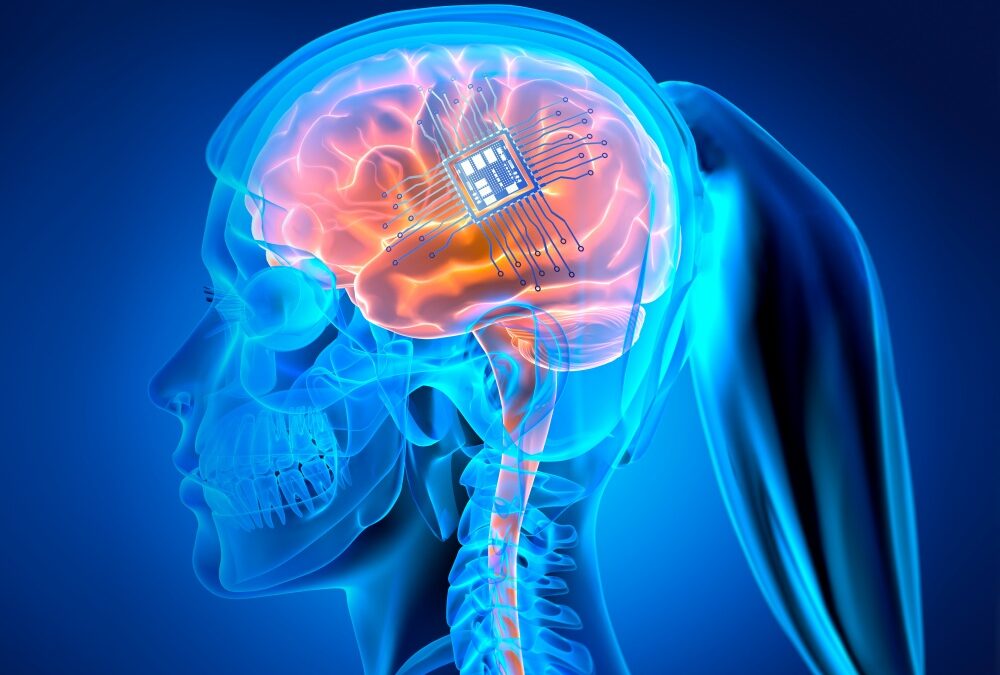Neuroplasticity, Neurogenesis, and synaptic plasticity and Stroke Recovery
The neural processes involved in functional recovery after a stroke, is reliant upon two mechanisms, neurogenesis and neuroplasticity.
Neurogenesis is the process of creating new neurons. This of course would be beneficial in the case of a stroke where neurons have been damaged/destroyed.
Neuroplasticity is the brains ability to adapt in response to new experiences. This is something that occurs throughout life.
Synaptic plasticity is a form of neuroplasticity that involves a change in the electrical signal between two neurons. The “synapse” is the space between two neurons and “plasticity” is the capacity for something to be moldable/changed. Hence, synaptic plasticity. The way that an electrical signal is transmitted is via chemicals called neurotransmitters.
Simplified, a neurotransmitter can either turn an adjoining neuron on (excitatory neurotransmitter) or off (inhibitory neurotransmitter). Synaptic plasticity involves several mechanisms whereby there is a change in the concentration of a neurotransmitters and/or a neurons ability to respond. When it comes to memory and/or learning a motor skill that we want to be able to repeat in the future, the brain rely’s on a mechanism called long-term potentiation (LTP).
LTP is a long lasting strengthening of a signal between to neurons that persists in response to a specific activity. If a neuron is repeatedly stimulated (repetitive practice of an activity), it will build more neurotransmitter receptors, and increase the amount of the neurotransmitter. Together, these two process will increase signal strength in that specific neural network.
What is BDNF and how does it work?
A growing body of evidence indicates that Brain-derived neurotrophic factor (BDNF) is a key player in multiple nerve communication processes. Simplified, BDNF is a molecule that triggers a cascade of actions on a neuron including neurogenesis (neuron growth), and synaptic plasticity (signal strength).
BDNF contributes to neurogenesis (growth of new neurons)
The current understanding is that BDNF binds to the TrKB receptor, triggering the neuron to grow more dendrites. Dendrites are the arms of a neuron that accept the neurotransmitters. More dendrites mean a stronger signal can be received from an adjoining neuron. Of note, current literature suggests this BDNF effect on a neuron is limited to specific brain areas. One area that has been identified is the hippocampus (brain area involved in memory and learning).
BDNF contributes to synaptic plasticity
Again, just to review, synaptic plasticity is the amount of signal strength between two neurons involving the release of a neurotransmitter to send the message. It is believed that BDNF regulates neurotransmitter release. In particular nitric oxide (NO), glutamate (excitatory neurotransmitter) and GABA (inhibitory neurotransmitter); and their receptors. In other words, BDNF might be one key that unlocks the door that allows the neurotransmitter to leave one neuron and the same key that opens the door of an adjoining neuron to allow that neurotransmitter to enter.
It is also believed that BDNF influences long-term potentiation (longer-lasting effects of signal strength). This process might be the result of BDNF influence on gene expression and/or protein synthesis.
Does BDNF Influence Stroke Recovery?
There is a growing body of evidence that suggests that BDNF can act as a repair agent after a stroke. However, the amount of BDNF (after a stroke) does not seem to be enough to overcome the cascade of events that are triggered by ischemia (lack of oxygen in the neuron). Therefore, pharmacologic and rehabilitation strategies have been identified as necessary interventions to increase the amount the BDNF expression. And in this area, there lies some potential opportunities to increase BDNF expression and functional recovery after a stroke.
Pharmacologic Interventions
The majority of the evidence suggests that BDNF can’t cross the blood-brain barrier (the filter that protects the brain). With that said, there does not currently seem to be a mechanism to get BDNF into the brain. Of note, there are ongoing studies that are investigating alternative means. One such study is working on creating a smaller molecule that can cross the blood-brain barrier. Other studies are investigating the potential of injecting a BDNF isoform directly into the damaged area of the brain. However, these studies have not yet proven to be effective.
Aerobic Exercise Increases BDNF expression
Multiple studies have shown a positive correlation between aerobic exercise, cognition, memory and BDNF expression in healthy people. Futhermore, there is considerable literature that increased BDNF expression improves learning, memory, and motor function in many disease processes, including stroke.
How much exercise is necessary to increase BDNF?
The consensus in the literature suggests 30 min of moderate intensity (heart rate goes up but you can still maintain a conversation), 4 days/week.
Aerobic exercise timing
There does appear to be an optimal time at which to perform your aerobic exercise. It is well documented that BDNF levels increase immediately following aerobic exercise. With that said, there are some who theorize that performing aerobic training prior to a cognitive/learning activity might prime the system to optimize synaptic plasticity.
Other articles you might like:
Spending Time in Nature: Benefits & How to Get Started
In the digital age, people are glued to their phones at all hours of the day. Factor in sedentary lifestyles, and we are damaging our mental and physical well-being. This is why we all need to get out—we mean this in the kindest way possible. Spend time outdoors,...
Processed Foods: Balancing Convenience, Safety, and Nutrition
Today, people are eating more processed food compared to the past few decades—and it’s easy to see why. It’s conveniently available, making it an absolute time-saver in the kitchen. It’s also usually cheaper and tastier than whole, natural foods while offering a...
2023 You, Is Just Fine……
“The key to finding happiness in this life is realizing that the only way to overcome is to transcend; to find happiness in the simple pleasures, to master the art of just being.”― Brianna Wiest I bought into the hype. Yup, about two weeks ago, I started my list of...
We have “hope” all wrong……
“Hope” is a virtue that can be a good foundation to propel us forward. In fact, I think it is essential for living life in a “broken” world. Yes, the world is broken. Humans are fallible. And because of this, bad things happen to good people. Evil does not...
Ensure Indoor Air Quality With the Best Air Purifiers of 2023
Based on information from the Environmental Protection Agency, most Americans spend 90% of their time indoors. Unfortunately, the amount of pollutants inside is often up to five times higher than most outdoor areas. Though it’s a worrying statistic, air purifiers can...
Decluttering: The Life-Changing Benefits of Tidying Up
One in 11 Americans have so many belongings that they have to pay a sweet $91.14 per month (on average) for storage space outside their homes. It’s not necessarily hoarding—sometimes, they just have difficulty parting with their prized possessions because of the...
Air Purifiers: Impact on health and disease
Our “environment” is one of many ways that it is possible to “leverage” health outcomes. In other words, decrease inflammation (correlated with many diseases) and optimize cell function. “Environmental air pollution has a direct impact on human health, being...
Failure…..
“Like success, failure is many things to many people. With positive mental attitude, failure is a learning experience, a rung on the ladder, and a plateau at which to get your thoughts in order to prepare to try again.”W. Clement Stone I have met many people that have...
It’s True! Having a Sense of Agency Over One’s Health Can Increase Our Lifespan
Our resilience and it turns out—even our longevity—depends on having a sense of agency over one’s health. When we talk about a sense of agency, we’re referring to having a feeling of control over what happens to us. It’s important because it aids our mental stability,...
In Plain Sight
Ask and it will be given to you; seek and you will find, knock and the door will be opened to you Matthew 7:7 “I want my old life back”. This is not an uncommon response when I am talking with a patient about their goals. And I get it. When you feel like something is...











